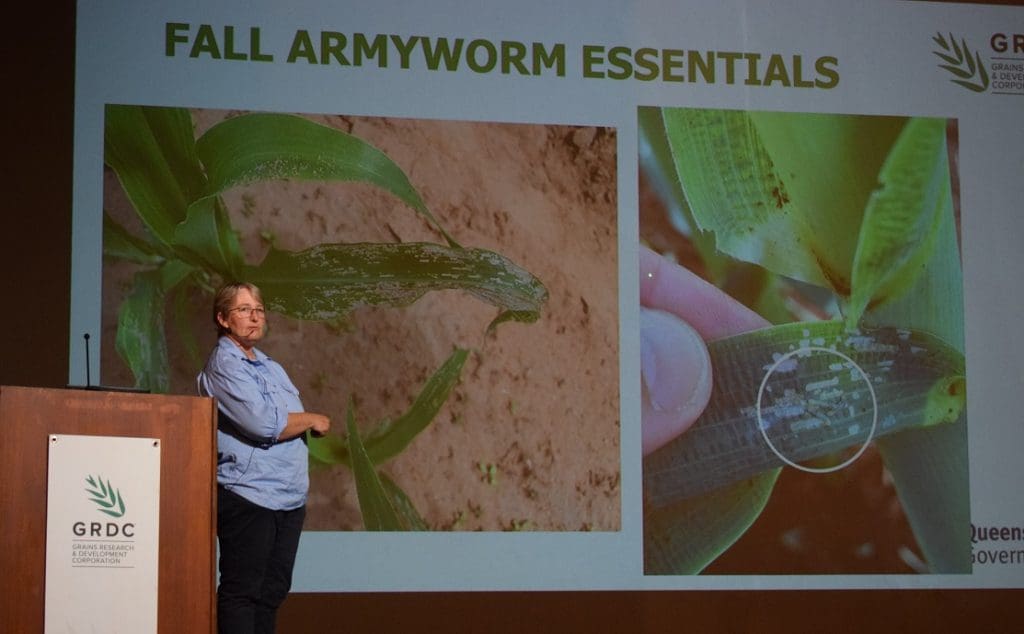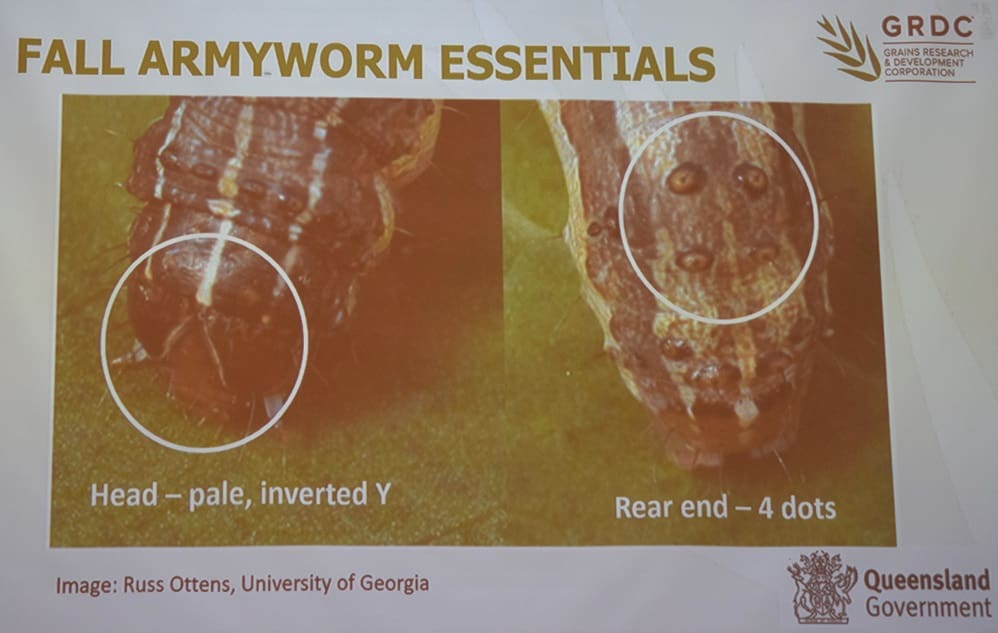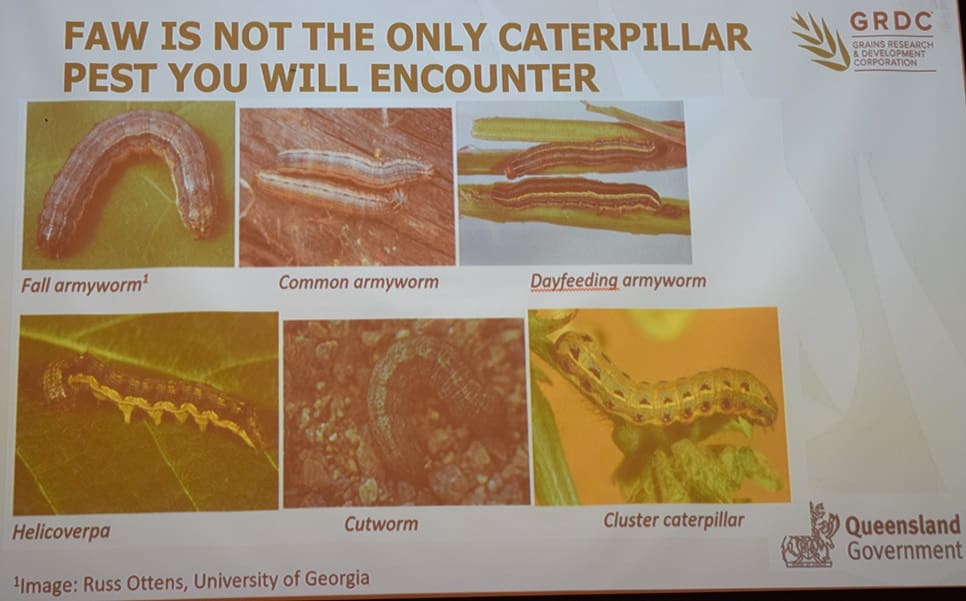
Dr Melina Miles says on-farm outbreaks of fall armyworm should be managed in a similar way to that of existing caterpillar pests.
THE biggest impact of the exotic pest, fall armyworm, is likely to be in the tropical and subtropical areas of Australia, and farmers and agronomists should plan to manage it in much the same way they control existing caterpillar pests, according Queensland Department of Primary Industries principal entomologist, Dr Melina Miles.
Fall armyworm (Spodoptera frugiperda) was first detected in Australia on islands in the Torres Strait in late January and has since spread down Cape York and into Far North Queensland. The latest confirmed detection is around South Johnstone in the Innisfail region.
“Spodoptera frugiperda is a tropical and marginally subtropical species, so we expect the large source areas will be in the tropics. The temperatures have to stay above 10 degrees. If it is frosty they won’t survive,” Dr Miles said.
“The modelling suggests they could persist year-round as far south as Brisbane east of the Dividing Range, and in inland areas probably not much further down than Central Queensland.
“One of the things that is likely is that we will see them (in more southern areas such as the Darling Downs) in summer, particularly late summer, when the populations have built up in the north and moved south.”
Authorities have conceded the pest is spreading rapidly and will be impossible to eradicate.
Entirely manageable
Speaking at the Grains Research and Development Corporation (GRDC) Grains Research Update in Goondiwindi, Dr Miles said any on-farm outbreaks of fall armyworm should be “entirely manageable”, particularly if growers and their agronomists detected the pest early.
“We are already familiar with Spodoptera species. We deal with the cluster caterpillar, for example, in our crops now. There is no reason to expect that fall armyworm will be more voracious in its in-crop feeding,” she said.
“The real challenge has come with detecting it early and with having effective control.
“Where it has been a massive problem overseas they are in systems that are very different to ours with very limited tools to control it quickly and detect it early enough. We are in a much better position with the work that agronomists and growers are doing in their crops all the time.”

Early identification
Dr Miles said it was critical for growers and agronomists to be able to identify the pest and recognise the signs of its activity in a crop.
“It is important to know what to look for. Unfortunately, the diagnostic characteristics only appear in larvae that are relatively mature at the fourth or fifth instar,” she said.
“The first thing to look for is on the head between the eyes is an inverted Y. Other army worm species also have that inverted Y, which is why you need to team it up with a second characteristic which is the four dots on the rear end.”
Dr Miles warned growers not to mistake the damage caused by existing caterpillar pests with that from fall armyworm, as the damage looked similar.
“We don’t want industry over-reacting and assuming that if they see shot holes in leaves, frass in the whirl or larvae in the cobs it must be fall armyworm because there are other species that also do this sort of damage, common armyworm and Helicoverpa in particular,” she said.
“It is very important when you think you have fall armyworm to actually sight the larvae.”

Resistance concerns
Plant Health Australia and the GRDC have in place emergency permits for fall armyworm control to cover the major crops.
Dr Miles said careful insecticide management was essential as insecticide resistance was a major issue with fall armyworm where it was present in the more developed countries.
“We expect it may have arrived in Australia with some resistance already established based on its experience wherever it came from,” she said.
“The likely candidates for resistance could be resistance to synthetic pyrethroids, carbamates and perhaps Bt.”
More information, CottonInfo Fact Sheet: https://www.cottoninfo.com.au/sites/default/files/documents/ID_guide_sc2.pdf
Report the movement of fall armyworm to: Exotic Pest Hotline, 1800 084 881, or Biosecurity Queensland, 132523
Grain Central: Get our free daily cropping news straight to your inbox – Click here

HAVE YOUR SAY